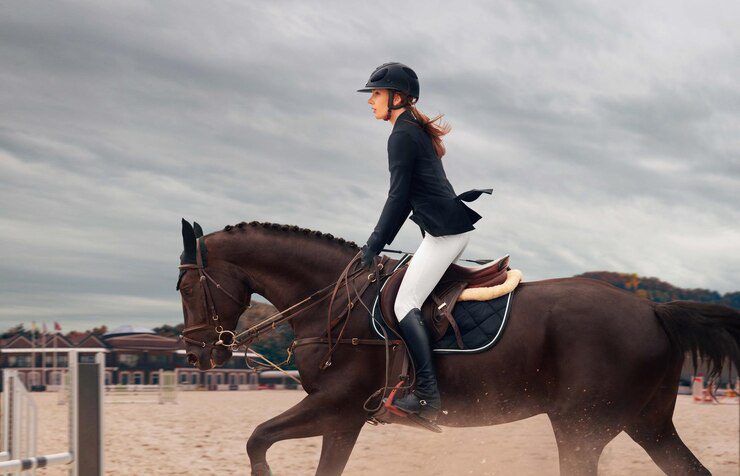The allure of horseback riding transcends mere transportation; it’s a dance between human and animal, a graceful language of subtle cues and coordinated movement. Mastering the art of equestrianism requires dedication, patience, and a deep understanding of both your own body and your equine partner. But fear not, aspiring rider! This guide will equip you with the essential equestrian riding techniques to navigate your journey from novice to confident equestrian.
Building a Foundation: Posture and Balance
Before you even consider advanced techniques, focus on establishing a solid foundation. Imagine your body as a bridge between horse and saddle. Maintain an upright posture with relaxed shoulders, a straight back, and a slight forward-looking gaze. This creates a balanced and secure base for both you and your horse.
The Language of Legs and Aids
Your legs are your primary means of communication with your horse. Learn the subtle language of leg aids: squeeze your calves gently for forward movement, apply light pressure for turns, and use your legs independently for refined control. Remember, less is often more; harsh or sudden movements can confuse and even frighten your horse bringing a change in riding form.
Independent Hands: Guiding with Finesse
Your hands, like your legs, are not for pulling or jerking. They should guide with light and steady contact, conveying your desired direction and pace. Imagine holding a butterfly; too tight, it flutters away, too loose, it disappears. Practice independent hands, meaning your hands move independently of your body, allowing for smooth turns and refined communication.
The Rhythm of the Ride: Understanding Gaits
Horses move in various gaits, each with its own rhythm and feel. Start by mastering the walk, focusing on a steady, balanced position. As your confidence grows, progress to the trot, learning to post and rise with the horse’s movement. Eventually, you can explore the canter and gallop, experiencing the exhilarating freedom of faster gaits.
Balance and Control: Mastering Turns and Transitions
Turns and transitions are essential for navigating obstacles and changing pace. Learn how to do horse training and prepare for a turn by using your leg aids and body position. Maintain a balanced seat and focus on initiating the turn smoothly, keeping your horse centered. Transitions between gaits should be smooth and controlled, achieved through subtle shifts in your weight, leg aids, and hand position.
Developing Harmony: Communication and Trust
Remember, equestrian riding is a partnership. Building a strong bond of trust and communication with your horse is paramount. Be patient, and consistent, and offer praise for good behavior. Never resort to force or punishment; negative reinforcement only breeds fear and resentment. Learn to read your horse’s body language, understand their signals, and respond with sensitivity.
Embrace the Journey: Continuous Learning and Growth
Equestrian riding is a lifelong learning journey. There’s always more to discover, refine, and improve. Embrace the challenges, learn from your mistakes, and seek guidance from experienced riders or trainers. Most importantly, enjoy the process! Revel in the connection with your horse, the thrill of mastering new techniques, and the breathtaking beauty of exploring the world from atop your equine companion.
Beyond the Basics: Specialized Techniques
As your skills and confidence flourish, you can explore specialized techniques like dressage, jumping, or Western riding, each with its own unique demands and rewards. Remember, the core principles of balance, communication, and respect for your horse remain constant, regardless of your chosen discipline.
Here are some additional tips to enhance your equestrian riding journey:
- Find a horse that suits your style and experience level.
- Warm up your horse properly before riding and cool down afterward.
- Prioritize safety and respect your horse’s limits.
- Be mindful of your body language and stay positive.
Conclusion
Mastering equestrian riding techniques isn’t just about achieving technical prowess; it’s about unlocking a deeper connection with a magnificent creature. Each conquered skill, each smooth transition, and each moment of shared understanding builds a bridge between you and your equine partner. This journey of learning is not linear, but a tapestry woven with triumphs and challenges, moments of frustration and bursts of joy.
So, as you continue your equestrian journey, keep your eyes on the horizon, but savor the present moment. Let the rhythmic dance of hooves guide you, the wind whisper secrets in your ears, and the connection with your horse fill your heart with joy. Remember, the true mastery lies not just in technique, but in the bond you forge with your equine companion, a bond that transcends words and speaks volumes in the language of trust, respect, and shared adventure.







